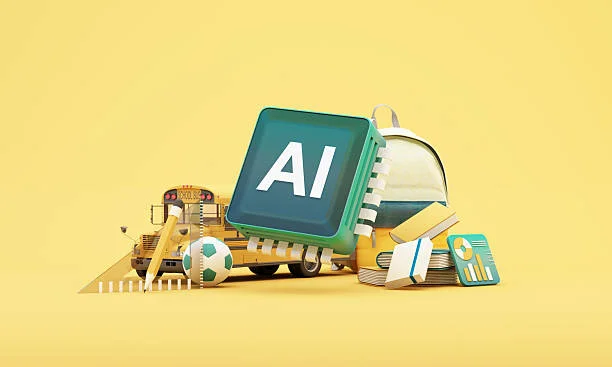In today’s fast‑moving classroom environment, finding the right tool to engage students and simplify lesson prep is more critical than ever. Enter the AI animation generator—a game‑changer for educators seeking to create vivid, memorable learning experiences without the long hours of traditional animation or video production. In this blog post we’ll explore ten creative ways teachers, trainers and instructional designers can harness an AI animation generator to solve real pain‑points and elevate student outcomes.
1. Turn Abstract Concepts into Visual Stories
One of the biggest challenges in teaching is making abstract ideas concrete. With an AI animation generator you can transform complex topics—like fractions, chemical reactions or supply‑and‑demand curves—into animated sequences. Visual storytelling helps students build mental models faster, a benefit well recognised in educational research on animation.
By crafting animations that depict a concept unfolding in real time, you give learners a “seeing is understanding” moment—rather than relying on static diagrams or verbal descriptions alone.
A related post that adds depth and clarity, guiding your understanding forward.
2. Differentiate Instruction for Diverse Learners
Modern classrooms are filled with students who have varied learning styles, speeds and needs. An AI animation generator allows you to create multiple versions of the same lesson—one simplified, one more advanced, one catered to visual language learners, another for students needing extra support. The dynamic flexibility addresses the need for personalised learning, which is increasingly cited as a key benefit of AI tools in education.
In practice, you might animate key vocabulary with extra visuals for ELL (English‑language learner) students, while offering a richer, detail‑heavy version for advanced learners—all created efficiently using the generator.
3. Motivate Reluctant or Distracted Learners
Have you noticed students zone out during lectures or traditional slide‑based lessons? Using an AI animation generator shifts the modality entirely: bright visuals, movement, characters, narrative arcs. That shift can capture attention and maintain engagement. Research shows animation boosts student retention and positive attitudes toward learning.
For example, you could animate a scheming character representing “wrong assumptions” in a math word problem, and then show the “hero” solving the problem step by step—turning the abstract into drama and keeping students hooked.
4. Save Lesson Preparation Time
Creating engaging visual materials has traditionally cost hours or even days—storyboarding, animating, editing. With an AI animation generator you bypass much of that overhead. Tools turn text prompts into animated scenes swiftly and intuitively.
This means you can spend your time on pedagogy and interaction, rather than technical production. For instance, instead of manually creating dozens of slide decks, you generate a short animation once and reuse it across classes—freeing space in your schedule for student‑centred tasks.
5. Enable Student‑Led Creation and Ownership
Why should only the teacher create animations? With an AI animation generator you can invite students to become content creators themselves. Assign projects like: “Design a 60‑second animated story that explains this science concept.” Student ownership boosts motivation, and the creation process helps cement learning.
By involving learners in prompt‑writing, storyline design and character choice, you build deeper understanding and critical thinking—while students experiment with digital literacy and creativity.
6. Reinforce Vocabulary, Language & Communication Skills
Language learning and vocabulary building often lag because students don’t see words in memorable contexts. When you animate vocabulary lists, dialogues or communication scenarios via an AI animation generator, students gain richer, contextualised exposure.
For example, animate a conversation set in a café for English learners, or depict cultural idioms in action for foreign language students. The visual and narrative boost comprehension, retention and student confidence in use.
7. Bring Real‑World Scenarios into the Classroom
Sometimes students struggle to see how classroom content applies to the real world. With an AI animation generator you can create animated simulations of real‑life situations: environmental science issues, business‑decision scenarios, social‑skills dialogues or historical events reenacted.
These immersive scenarios help learners see relevance, practise decision‑making and apply knowledge. They also make the lesson memorable—something that static slides rarely achieve.
8. Create Interactive Flipped Classroom Materials
Flipped learning demands quality pre‑class materials—ideally ones students want to watch. By using an AI animation generator to create short, lively animated videos for homework or pre‑work, you increase the likelihood students arrive prepared.
Moreover, you can incorporate discussion prompts, embedding the animation with pause points or reflective questions. Then in class you spend less time lecturing and more time facilitating deeper discussion, application and peer collaboration.
9. Empower Visual Projects for Assessment
Traditional assessments like essays or quizzes have their place, but giving students the option to submit an animated project via an AI animation generator introduces novelty and creativity.
Ask students to explain a concept via a 90‑second animation, design a visual story around a historical event or illustrate a business process. These animations allow you to assess not only content mastery but also communication and design thinking—valuable real‑world skills.
10. Foster a Culture of Innovation and Digital Literacy
Using an AI animation generator isn’t just about one lesson; it signals to students that learning is evolving, digital and creative. By integrating this tool, you model innovation, adaptability and 21st‑century skills.
Also you open conversations about AI itself—its capabilities, ethical implications, and role in creative work. This meta‑discussion helps students become thoughtful digital citizens and prepares them for future environments where AI‑driven tools are commonplace.
Getting Started: Three Steps to Implementation
Week 1 – Demonstration. Create one quick animated piece using your AI animation generator, show it in class, discuss how it works and why you chose it.
Week 2 – Guided Group Activity. Have students suggest lesson‑elements, script the prompt together, and generate a class animation collaboratively.
Week 3 – Student Projects. Assign small‑group projects where students create their own animations. Provide a rubric emphasising clarity of concept, creativity and correct use of content.
Pro Tips for Success
- Align each animation with a clear learning objective—ensure it isn’t just flashy but educationally sound.
- Preview all animations for appropriateness, accessibility and technical issues.
- Encourage students to reflect: What worked? What did the animation help me understand that I wouldn’t have otherwise?
- Use the animations as launch‑pads for deeper discussion—not simply show them and move on.
- Introduce students to the idea of “good prompt design” to maximise quality outputs from your AI animation generator.
Final Thoughts
The power of an AI animation generator lies in its ability to merge storytelling, visual design and technology into pedagogy in a way that places student experience at the centre. By adopting it in thoughtful, intentional ways you address core teaching pain‑points—time constraints, student disengagement, varied learning needs—while opening doors to creativity, relevance and modern literacies.
Whether you’re a seasoned educator or just curious about blending animation into your teaching toolkit, now is the time to explore how an AI animation generator can transform your lesson plans from ordinary to extraordinary. Students will thank you. Your teaching will feel revitalised. And learning will truly come alive.
Explore more posts built to fuel curiosity and empower smarter decision-making.






